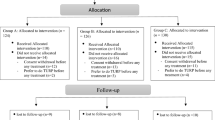Abstract
Objective
To evaluate the efficacy and tolerability of tamsulosin 0.2mg once daily in Korean patients with lower urinary tract symptoms (LUTS) suggestive of benign prostatic hyperplasia (BPH), who were treated for up to 1 year.
Materials and methods
Of the 211 patients from six urology outpatient centres who participated in this investigation, 146 patients were evaluable. Tamsulosin 0.2 mg/day was administered orally in a nonblind design for a 1-year period. The primary efficacy parameters were improvement in the total, obstructive and irritative International Prostate Symptom Score (IPSS), measured at baseline and at weeks 12, 24, 36 and 52, and in the maximal urinary flow rate (Qmax) measured at baseline and at weeks 24 and 52. The secondary efficacy parameters were a decrease of ≥30% in IPSS, and an increase in Qmax of ≥30% from baseline. Changes in parameters between baseline and 52 weeks were assessed using Student’s paired t-test.
Results
Statistically significant, gradual improvements in all efficacy parameters were observed over the 1-year period. Tamsulosin 0.2 mg/day resulted in a mean reduction of 41.1% in total IPSS (p < 0.001) and a mean increase of 4.56 mL/sec in Qmax at 52 weeks (p < 0.001). Tamsulosin was well tolerated; adverse events occurred in 6.2% of patients and there were no withdrawals as a result of adverse events. There were no significant changes in blood pressure or pulse rate during the study.
Conclusions
One-year treatment with tamsulosin 0.2 mg/day in Korean patients with suspected BPH was well tolerated and effective in improving LUTS and urinary flow. The effect on symptoms was apparent after 12 weeks of treatment, and symptom improvement was observed for up to 1 year.






Similar content being viewed by others
References
Berry SJ, Coffey DS, Walsh PC, et al. The development of human benign prostatic hyperplasia with age. J Urol 1984; 132: 474–9
Mapalkov P, Maisonneuve P, Boyle P. Worldwide patterns of prevalence and mortality from benign prostatic hyperplasia. Urology 1995; 46(3 Suppl. A): 41–6
Garraway WM, Collins GN, Lee RJ. High prevalence of benign prostatic hypertrophy in the community. Lancet 1991; 338: 469–71
Caine M, Perlberg S, Meretyk S. A placebo-controlled double-blind study of the effect of phenoxybenzamine in benign prostatic obstruction. Br J Urol 1978; 50: 551–4
Abrams PH, Shah PJ, Stone R, et al. Bladder outflow obstruction treated with phenoxybenzamine. Br J Urol 1982; 54: 527–30
McKiernan JM, Lowe FC. Side effects of terazosin in the treatment of symptomatic benign prostatic hyperplasia. South Med J 1997; 90: 509–13
Lowe FC. Safety assessment of terazosin in the treatment of patients with symptomatic benign prostatic hyperplasia: a combined analysis. Urology 1994; 44: 46–51
Andersson KE, Lepor H, Wyllie MG. Prostatic alpha 1-adre-noceptors and uroselectivity. Prostate 1997; 30: 202–15
Lepor H, Tang R, Kobayashi S, et al. Localization of the alpha 1A-adrenoceptor in the human prostate. J Urol 1995; 154: 2096–9
Forray C, Bard JA, Wetzel JM, et al. The α1-adrenergic receptor that mediates smooth muscle contraction in human prostate has the pharmacological properties of the cloned human α1c-subtype. Mol Pharmacol 1994; 45: 703–8
Kaplan SA, Goluboff ET, Olsson CA, et al. Effect of demographic factors, urinary peak flow rates, and Boyarsky symptom scores on patient treatment choice in benign prostatic hyperplasia. Urology 1995; 45: 398–405
Lepor H, Williford WO, Barry MJ, et al. The efficacy of terazosin, finasteride, or both in benign prostatic hyperplasia. N Engl J Med 1996; 335: 533–9
Schulman CC, Cortvriend J, Jonas U, et al. Tamsulosin, the first prostate-selective alpha 1A-adrenoceptor antagonist. Analysis of a multinational, multicenter, open-label study assessing the long-term efficacy and safety in patients with benign prostatic obstruction (symptomatic BPH). Eur Urol 1996; 29(2): 145–54
Abrams PH, Schulman CC, Vaage S, et al. Tamsulosin, a selective α1c-adrenoceptor antagonist: a randomized, controlled trial in patients with benign prostatic obstruction (symptomatic BPH). Br J Urol 1995; 76: 325–36
Chapple CR, Wyndaele JJ, Nordling J, et al. Tamsulosin, the first prostate-selective alpha 1A-adrenoceptor antagonist: a meta-analysis of two randomized, placebo-controlled, multi-center studies in patients with benign prostatic obstruction (symptomatic BPH). Eur Urol 1996; 29: 155–67
Lepor H. Phase III multicenter placebo-controlled study of tamsulosin in benign prostatic hyperplasia. Urology 1998; 51: 892–900
Lepor H. Long-term evaluation of tamsulosin in benign prostatic hyperplasia: placebo-controlled, double-blind extension of phase III trial. Urology 1998; 51: 901–6
Schulman CC, Cortvriend J, Jonas U, et al. Tamsulosin: 3-year long-term efficacy and safety in patients with lower urinary tract symptoms suggestive of benign prostatic obstruction: analysis of a European, multinational, multicenter, open-label study. Eur Urol 1999; 36: 609–20
Narayan P, Evans CP, Moon T. Long-term safety and efficacy of tamsulosin for the treatment of lower urinary tract symptoms associated with benign prostatic hyperplasia. J Urol 2003; 170(2 Pt 1): 498–502
Foglar R, Shibata K, Horie K, et al. Use of recombinant α1-adrenoceptors to characterize subtype selectivity of drugs for the treatment of prostatic hypertrophy. Eur J Pharmacol 1995; 288: 201–7
de Mey C. Alpha 1-blockers for BPH: are there differences? Eur Urol 1999; 36 Suppl. 3: 52–63
Noble AJ, Chess-Williams R, Couldwell C, et al. The effects of tamsulosin, a high affinity antagonist at functional alpha 1A-and alpha 1D-adrenoceptor subtypes. Br J Pharmacol 1997; 120(2): 231–8
Hampel C, Dolber PC, Smith MP, et al. Modulation of bladder α1-adrenergic receptor subtype expression by bladder outlet obstruction. J Urol 2002; 167: 1513–21
Sironi D, Levorato CA, Deiana G, et al. Decrease of ultrasound estimated bladder weight during tamsulosin treatment in patients with benign prostatic enlargement. Arch Ital Urol Androl 2002; 74: 90–4
Acknowledgements
This study was supported by a grant from Yamanouchi Pharmaceutical Co. Ltd. The authors have provided no information on sources of funding or on conflicts of interest directly relevant to the content of this review/study.
Author information
Authors and Affiliations
Corresponding author
Rights and permissions
About this article
Cite this article
Park, C.H., Chang, H.S., Oh, B.R. et al. Efficacy of Low-Dose Tamsulosin on Lower Urinary Tract Symptoms Suggestive of Benign Prostatic Hyperplasia. Clin. Drug Investig. 24, 41–47 (2004). https://doi.org/10.2165/00044011-200424010-00005
Published:
Issue Date:
DOI: https://doi.org/10.2165/00044011-200424010-00005




